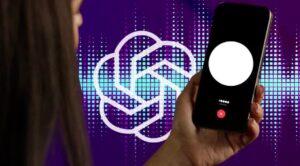Scientists develop an extra thumb to make life easier
4 min readPeople could soon be opening bottles, undoing zips and peeling bananas with just one hand after scientists developed a robotic thumb that provides a handy extra digit.
The second thumb is worn on the outside of the little finger and is wirelessly controlled using wafer-thin pressure sensors attached to the feet.
These are positioned on the underside of both big toes – with each sensor controlling different movements of the thumb by responding to subtle changes of pressure.
The thumb has been successfully tested in a landmark trial and could be available for people to buy and use in the home within five years – adding dexterity to everyday tasks as well as being a fun toy to play about with, according to its developer, Dani Clode.

Beyond that, we could see the thumb entering the workplace, for example by enabling waiters to carry more glasses and plates, or pianists to tinkle out more notes, she said.
The trial of the thumb is the first test of any kind of ‘body augmentation’ device outside the lab and heralds a brave new future for this fledgling field, she added.
Elsewhere, scientists are developing extra arms and extra fingers but these projects are at an earlier stage.
“Body augmentation could one day be valuable to society in numerous ways, such as enabling a surgeon to get by without an assistant, or a factory worker to work more efficiently,” said Paulina Kieliba, of University College London.
“This line of work could revolutionise the concept of prosthetics, and it could help someone who permanently or temporarily can only use one hand, to do everything with that hand,” she said.
Dr Clode, also of UCL, added: “Our study shows that people can quickly learn to control an augmentation device and use it for their benefit, without overthinking.”
The researchers found that giving a person a an extra, 3D-printed thumb, quickly changed the way they thought by subtly altering the way the hand was represented in their brain – with participants reporting that it increasingly felt like a part of their body.
They say these changes need to be investigated more fully before the thumbs are commercialised – just to make sure they don’t produce any detrimental effects.
The researchers were surprised by how quickly the body adapted to the new thumb – which participants said actually helped them perform some tasks better, once they got used to it.
Augustus Le Roux, a 20 year old student in London who was one of the participants in the study, said: “Learning the controls was a very alien process to begin with. However, once that was overcome – and it didn’t take long – using the thumb was hugely enjoyable, and it actually integrated very organically into whatever I was doing.”
“After a few days, it began to feel like a logical extension of my hand, and after that, it became second nature to use it during the tasks. I found the learning process to be surprisingly natural, and certainly a lot easier than I expected,” he added.
Asked if he would consider buying one, Mr Le Roux said: “Without a doubt. I always had an interest in the concept of electronic or mechanical augmentation, and this has certainly convinced me that they could be sufficiently practical to be worth getting,” he said.
“At the very least it would be an interesting thing to play around with, and with the proliferation of cheap microcontrollers and sensors, the possibility of using a hand augmentation device as a platform for embedding new capabilities is particularly exciting.”

Mr Le Roux said he was “surprised” to discover that the extra thumb soon made it easier to “carry multiple wine glasses in one hand and reposition them on a board” – and to build a jenga tower.
For the study, 20 participants were trained to use the thumb over five days, during which they were also encouraged to take it home each day after training to use it in daily life scenarios, totalling two to six hours of wear time per day.
Dr Clode is working to commercialise the thumb. She has been approached by a number of companies and is also considering crowdfunding.
She says the thumbs currently cost about £3,000 to produce but is hopeful that this can be cut to between £900 and £1,200 by the time the product comes to market – and potentially cost less than that further down the line.
The study is published in the journal Science Robotics and also involved scientists from the University of Oxford. The lead author is UCL Professor Tamar Makin and the research was conducted through the Plasticity Lab she runs at the university.






